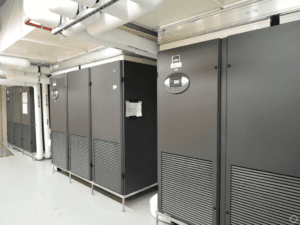Airflow management is critical for optimising the performance and efficiency of your data centre or server room. At EziBlank, we specialise in innovative solutions that not only enhance air circulation but also reduce energy costs, allowing you to get the most out of your infrastructure investment. Our expertly designed blanking panels are quick to install and work seamlessly to manage airflow, ensuring your equipment operates at peak performance while cutting unnecessary power consumption. Discover how our intelligent systems can transform your environment—because when it comes to airflow management, every detail counts.
How Server Blanking Panels Improve Data Center Efficiency
Optimising data centre efficiency is a crucial task, and server blanking panels are an often-overlooked solution that plays a significant role. These panels help in managing airflow within server racks, preventing hot air recirculation and ensuring that cooling systems operate more effectively. By maintaining the proper thermal environment, blanking panels contribute to reduced energy consumption and lower operational costs, making them an essential component for data centres aiming for peak performance and sustainability.
Read More
The Role of Blanking Panels in Energy Efficiency
Blanking panels may seem like a minor component within data centres, but their role in enhancing energy efficiency is substantial. By effectively sealing unused spaces in server racks, these panels prevent the mixing of hot and cold air, allowing cooling systems to operate more efficiently. This targeted airflow management reduces the overall energy consumption required to maintain optimal temperatures, leading to significant cost savings and a lower carbon footprint. Incorporating blanking panels into data centre infrastructure is a simple yet powerful step towards achieving greater energy efficiency and sustainability.
Read More
Elevate Data Center Performance with Blanking Panels
Enhancing the performance of data centres often hinges on small yet impactful innovations, such as the strategic use of blanking panels. These panels are designed to cover unused spaces in server racks, preventing hot air from recirculating and ensuring that cooling systems work at peak efficiency. By improving airflow management, blanking panels help maintain optimal operating conditions for servers, reducing the risk of overheating and boosting overall system performance. For data centres striving to maximise efficiency and reliability, blanking panels offer a straightforward and effective solution.
Read More
What are blanking panels and how do they work?
Blanking panels are a critical yet often underappreciated component in the design of efficient data centres. These panels are used to cover empty spaces within server racks, preventing the unwanted mixing of hot and cold air. By directing the airflow more effectively, blanking panels ensure that cooling systems operate more efficiently, reducing the energy required to maintain optimal temperatures. This not only enhances the performance and longevity of the equipment but also contributes to significant energy savings, making blanking panels a simple but powerful tool in data centre management.
Read More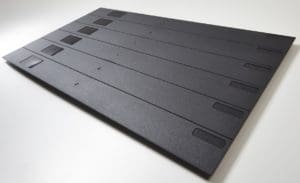
The Power of Eziblank Blanking Panels for Data Center Retrofits
When it comes to retrofitting data centres, EziBlank® blanking panels offer a straightforward yet highly effective solution to enhance cooling efficiency and reduce energy consumption. These panels are specifically designed to seal unused rack spaces, preventing hot air from recirculating into the cold aisle and ensuring that cooling efforts are focused where they are needed most. By optimising airflow management, EziBlank® panels not only improve the overall performance of the data centre but also extend the life of critical equipment. For data centres looking to upgrade without extensive overhauls, EziBlank® blanking panels provide a cost-effective and impactful option.
Read More
How Do I Reduce Data Center Operating Costs?
Reducing operating costs in data centres is a key priority for businesses seeking to maximise efficiency while maintaining high performance. One of the most effective strategies involves optimising cooling systems, as cooling typically accounts for a significant portion of energy expenses. Implementing solutions like blanking panels to manage airflow and prevent hot air recirculation can drastically reduce the energy needed for cooling. Additionally, adopting energy-efficient hardware and monitoring systems to track and adjust power usage can further drive down costs. By focusing on these areas, data centres can achieve substantial cost savings while maintaining optimal operational standards.
Read More
Innovative Solutions for Data Center Cooling
Effective cooling solutions are vital for the smooth operation of data centres, where temperature control is critical to maintaining equipment reliability and performance. Various strategies are employed to manage heat, from advanced liquid cooling systems that directly cool high-density servers to traditional air cooling enhanced by precision airflow management. The use of blanking panels is a simple yet powerful method to improve air circulation, preventing hot spots and reducing the workload on cooling systems. By implementing a combination of these cooling technologies, data centres can optimise their energy efficiency, lower operational costs, and ensure that their infrastructure remains robust and reliable.
Read More
What are data centre floor tiles
Data centre floor tiles are an essential component of the infrastructure that helps manage airflow and support the weight of heavy equipment. Typically used in raised floor systems, these tiles are designed to allow for the efficient distribution of cool air from below the floor to the servers above. Perforated or vented tiles are particularly common, as they enable controlled airflow to specific areas, ensuring that cooling is directed where it's most needed. In addition to their functional role, these tiles must also be durable enough to withstand the constant load and movement of heavy server racks, making them a critical element in maintaining the overall efficiency and safety of a data centre.
Read More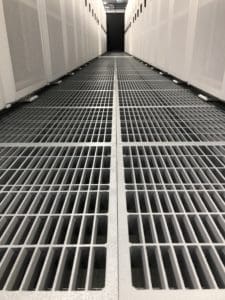
The Importance of Energy Efficiency in Data Centres
Energy efficiency is a crucial factor in the operation of data centres, as these facilities consume vast amounts of power to keep servers running and maintain optimal cooling conditions. Improving energy efficiency not only reduces operational costs but also lessens the environmental impact of data centres, aligning with global sustainability goals. Strategies such as implementing advanced cooling systems, utilising renewable energy sources, and optimising airflow management with tools like blanking panels are key to achieving higher energy efficiency. By focusing on these areas, data centres can enhance performance while contributing to a more sustainable future.
Read More
Blanking Panels: The Importance of them in Server Racks
Blanking panels play a vital role in maintaining the efficiency and effectiveness of data centre cooling systems. By filling the empty spaces in server racks, these panels prevent the mixing of hot and cold air, ensuring that the cool air is directed where it is needed most—towards the active equipment. This targeted airflow management helps to maintain optimal operating temperatures, reduces the strain on cooling systems, and ultimately leads to lower energy consumption. The use of blanking panels not only improves the performance and longevity of data centre equipment but also contributes to significant cost savings and a more sustainable operation.
Read More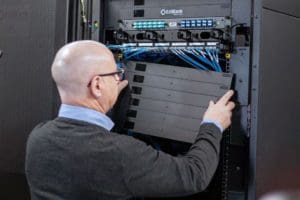
How airflow works inside of a server
Airflow inside a server is meticulously designed to ensure that the hardware operates within safe temperature ranges, which is critical for maintaining performance and preventing overheating. Cool air is typically drawn in from the front of the server through intake fans, passes over the heat-generating components such as the CPU, memory, and hard drives, and is then expelled as hot air through exhaust fans at the back of the server. This controlled airflow ensures that each component receives the cooling it needs. Effective airflow management within the server, complemented by data centre solutions like blanking panels, helps maintain optimal operating conditions, extends the lifespan of the equipment, and reduces the overall energy required for cooling.
Read More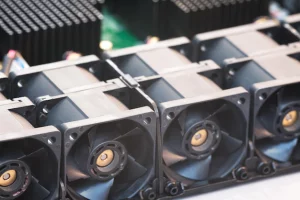
Cold Aisle Containment Solutions & Products
Cold aisle containment is a highly effective strategy for improving the efficiency and performance of data centre cooling systems. This approach involves physically separating the cold air used for cooling servers from the hot exhaust air, typically by enclosing the cold aisle where the server fronts are located. By preventing the mixing of hot and cold air, cold aisle containment ensures that cooling is more targeted and efficient, reducing energy consumption and lowering operational costs. Products designed for cold aisle containment, such as doors, ceiling panels, and blanking panels, help maintain a stable, cool environment within the aisle, allowing data centres to operate more efficiently and sustainably. This solution is particularly valuable in high-density environments where cooling demands are significant.
Read More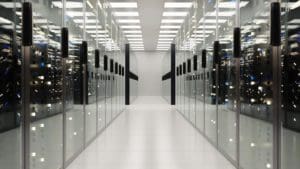
Hot Aisle vs Cold Aisle Containment
Hot aisle and cold aisle containment are two critical strategies used in data centres to enhance cooling efficiency and reduce energy consumption. In a cold aisle containment setup, cold air is contained within the aisle where the fronts of the server racks face each other, ensuring that only cool air is delivered directly to the equipment. This prevents the mixing of cold air with hot exhaust air, improving cooling efficiency. Conversely, hot aisle containment involves enclosing the aisle where the backs of the servers expel hot air. This containment captures and directs the hot air back to the cooling systems, preventing it from mixing with the cool air in the room. Both methods are effective, but the choice between hot and cold aisle containment depends on the specific design and cooling needs of the data centre. Implementing either strategy can lead to significant improvements in energy efficiency and overall system performance.
Read More
Designing an Energy-Efficient Data Center
Designing an energy-efficient data centre requires a strategic approach that combines advanced technology with best practices in layout and infrastructure management. The foundation of an energy-efficient design begins with optimising the physical layout, such as implementing hot and cold aisle containment to prevent the mixing of hot and cold air, which significantly reduces the burden on cooling systems. Incorporating energy-efficient hardware, such as servers and storage devices that consume less power, is also crucial. Additionally, leveraging renewable energy sources like solar or wind power can greatly reduce the carbon footprint of the facility. Effective monitoring and management tools are essential for tracking energy use and making real-time adjustments to improve efficiency. By focusing on these elements, a data centre can achieve optimal performance while minimising energy consumption and operational costs.
Read More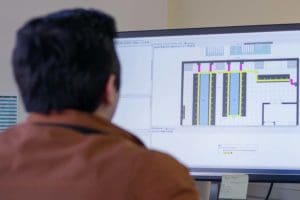
Airflow Management Products
Airflow management products are essential tools for optimising cooling efficiency and maintaining the performance of data centres. These products include blanking panels, which are used to cover unused spaces in server racks, preventing hot air from recirculating and ensuring that cool air is directed precisely where it’s needed. Perforated floor tiles are another key product, allowing controlled cool air delivery from beneath the raised floor to the servers. Additionally, air curtains and containment systems, such as hot and cold aisle containment solutions, help separate hot and cold air streams, further enhancing cooling efficiency. By implementing these airflow management products, data centres can reduce energy consumption, improve equipment longevity, and maintain optimal operating conditions.
Read More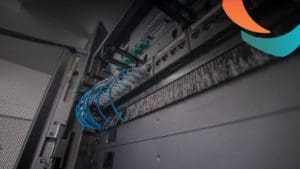
Data Center Cooling: Best Practices
Implementing best practices for data centre cooling is crucial to maintaining efficiency, reducing energy costs, and ensuring the longevity of equipment. Key practices include optimising airflow by using blanking panels to fill unused rack spaces, which prevents hot air recirculation and ensures that cool air reaches the servers effectively. Additionally, employing hot and cold aisle containment systems can further enhance cooling efficiency by separating hot exhaust air from cold intake air, reducing the workload on cooling systems. Regular maintenance of HVAC systems and air filters is essential to ensure that cooling units operate at peak performance. Monitoring temperature and humidity levels in real-time allows for adjustments that prevent overheating and ensure optimal conditions. By following these best practices, data centres can achieve significant improvements in cooling efficiency, leading to lower operational costs and improved equipment performance.
Read More
Hot Aisle Containment Solutions & Products
Hot aisle containment solutions typically include barriers, doors, and ceiling panels that effectively seal off the hot aisle, creating a controlled environment where the separation of hot and cold air is meticulously maintained. This separation ensures that hot exhaust air is directed away from the servers and into return air ducts, preventing it from mixing with the cool intake air and thereby enhancing the efficiency of the cooling system. Implementing these solutions not only significantly reduces energy consumption and lowers cooling costs but also enhances the overall performance, reliability, and lifespan of the data centre’s infrastructure, making it a vital strategy for modern data centres aiming to optimise their operations.
Read More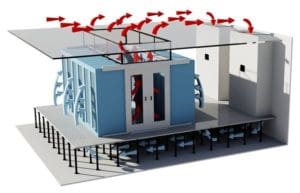
Green Data Center Case Study
A green data centre case study highlights how implementing sustainable practices can lead to significant environmental and financial benefits. In one example, a data centre achieved substantial energy savings by integrating renewable energy sources such as solar and wind power into its operations. Additionally, the facility utilised advanced cooling technologies, including free cooling and liquid cooling systems, which drastically reduced the reliance on traditional, energy-intensive air conditioning. The implementation of hot and cold aisle containment systems further optimised airflow, minimising energy waste. Through these initiatives, the data centre not only reduced its carbon footprint but also realised considerable cost savings, demonstrating that sustainability and efficiency can go hand in hand. This case study serves as a model for other facilities aiming to transition towards greener, more energy-efficient operations.
Read More
How to Manage Airflow in a Data Center
Managing airflow in a data centre is crucial for maintaining optimal cooling efficiency and ensuring the longevity of equipment. Effective airflow management begins with the strategic placement of blanking panels in server racks to eliminate gaps, which prevents hot air from recirculating and ensures that cool air is directed precisely where it’s needed. Implementing hot and cold aisle containment systems further enhances airflow by separating the hot exhaust air from the cool intake air, reducing the workload on cooling systems. Proper cable management is also essential to avoid obstructions that can disrupt airflow patterns. Additionally, using perforated floor tiles in the raised floor environment helps channel cool air directly to the servers. Regular monitoring and adjustments based on real-time data are necessary to maintain efficient airflow and adapt to changes in the data centre’s layout or load. These strategies collectively help optimise cooling, reduce energy consumption, and improve the overall performance of the data centre.
Read More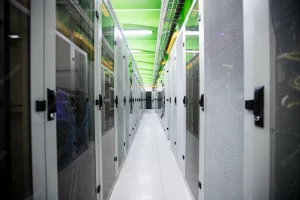
Blanking Panels: The Ultimate Guide
Blanking panels are a crucial yet often overlooked component in data centre management, playing a vital role in optimising airflow and enhancing energy efficiency. These panels are designed to fill the empty spaces in server racks, preventing the recirculation of hot air into the cold aisle, which can otherwise lead to hotspots and reduced cooling efficiency. By directing cool air precisely to where it’s needed and ensuring that hot air is properly expelled, blanking panels help maintain optimal operating temperatures, reduce the workload on cooling systems, and ultimately lower energy costs. Available in various sizes and materials, blanking panels are easy to install and offer a cost-effective solution for improving data centre performance. Regular use and proper installation of blanking panels not only contribute to a more efficient and reliable data centre but also extend the lifespan of critical IT equipment.
Read More
What is Cold Aisle Containment
Cold aisle containment is a data centre cooling strategy designed to improve energy efficiency and optimise temperature control. In this setup, the cold aisle, where the fronts of the server racks are located, is enclosed to prevent the mixing of cold air with the hot exhaust air from the servers. This containment system ensures that the cool air from the air conditioning units is directed exclusively towards the servers' intake, maximising cooling efficiency. By containing the cold aisle, data centres can maintain lower temperatures with less energy, reducing the workload on cooling systems and lowering overall energy consumption. This approach not only improves the performance and reliability of the equipment but also contributes to significant cost savings and a more sustainable data centre operation. Cold aisle containment is particularly effective in high-density data centres where cooling demands are substantial.
Read MoreThe Complete Guide to Data Center Cooling
Effective data centre cooling is essential for maintaining the reliability and efficiency of IT infrastructure. Key strategies include optimising airflow through techniques like hot and cold aisle containment, which separates hot and cold air to enhance cooling efficiency. Blanking panels are used to fill unused rack spaces, preventing hot air recirculation and ensuring cool air reaches where it's needed most. Advanced technologies like liquid cooling, which circulates coolant directly to hot components, and free cooling, which utilises natural cold air or water, further reduce energy consumption. Real-time monitoring of temperature and humidity allows for precise control, ensuring optimal conditions while minimising energy use. Together, these approaches protect equipment, lower operational costs, and contribute to a more sustainable data centre.
Read MoreBest Practice Guide for an Energy Efficient Data Center
Creating an energy-efficient data centre involves implementing best practices that optimise performance while minimising energy consumption. Key strategies include effective airflow management, such as using blanking panels and hot/cold aisle containment to prevent the mixing of hot and cold air, thus reducing the load on cooling systems. Upgrading to energy-efficient hardware and utilising advanced cooling technologies like liquid or free cooling can significantly lower energy use. Regular monitoring and optimisation of power usage effectiveness (PUE) are also crucial, allowing for real-time adjustments that enhance efficiency. These practices not only reduce operational costs but also contribute to a more sustainable and environmentally friendly data centre.
Read More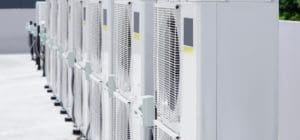
What is Hot Aisle Containment
Hot aisle containment is a cooling strategy used in data centres to improve energy efficiency by isolating the hot air generated by servers. In this setup, the hot aisle, where the backs of the servers expel warm air, is enclosed, preventing the hot air from mixing with the cool air in the rest of the data centre. This containment ensures that the hot air is directed straight to the cooling units, where it is removed or recycled, thereby reducing the workload on the cooling system. By maintaining a clear separation between hot and cold airflows, hot aisle containment helps to lower energy consumption, enhance cooling efficiency, and maintain optimal operating conditions for the servers, making it a crucial strategy for modern data centre management.
Read More
The Basics of Airflow Management
Airflow management is a fundamental aspect of data centre design that focuses on optimising the cooling process to ensure that IT equipment operates efficiently and reliably. The primary goal is to prevent the mixing of hot and cold air within the data centre, which can lead to hotspots and inefficient cooling. Key strategies include the use of blanking panels to seal off unused rack spaces, directing cool air to where it’s needed most and preventing hot air from recirculating. Additionally, hot and cold aisle containment systems are employed to physically separate the cold intake air from the hot exhaust air, further improving cooling efficiency. Effective airflow management reduces the energy required for cooling, lowers operational costs, and enhances the overall performance and lifespan of data centre equipment.
Read More
Profiling your data centre for greater efficiency
Profiling your data centre is a crucial process for understanding its current performance, identifying inefficiencies, and planning for future improvements. This involves a comprehensive analysis of various aspects of the data centre, including power usage, cooling effectiveness, airflow management, and overall infrastructure performance. By profiling, data centre managers can pinpoint areas where energy is being wasted, such as hot spots caused by poor airflow or overcooling. Tools like temperature sensors, power meters, and monitoring software are often used to collect data that provides insights into how well the data centre is operating. With this information, targeted strategies can be implemented, such as optimising airflow with blanking panels or adjusting cooling systems, to enhance energy efficiency, reduce costs, and improve the reliability and lifespan of the equipment. Profiling is an essential step in ensuring that a data centre operates at peak efficiency and is prepared to meet future demands.
Read More
Higher efficiency is the new energy standard for data centre
Higher efficiency has become the new energy standard for data centres as organisations increasingly prioritise sustainability and cost-effectiveness in their operations. Achieving this standard involves adopting advanced technologies and best practices that significantly reduce energy consumption without compromising performance. Key strategies include optimising airflow management with solutions like blanking panels and hot/cold aisle containment, which prevent the mixing of hot and cold air, thereby improving cooling efficiency. Upgrading to energy-efficient hardware and implementing advanced cooling techniques, such as liquid cooling, also contribute to reducing power usage. Additionally, real-time monitoring of energy metrics, such as Power Usage Effectiveness (PUE), allows data centre managers to make informed decisions and continually refine their operations. Embracing these practices not only helps data centres lower their operational costs but also aligns them with global sustainability goals, making higher efficiency the new benchmark in the industry.
Read More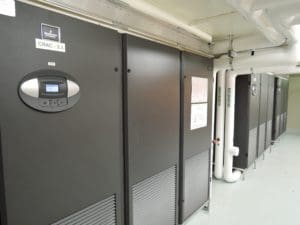
High performance directional floor tiles for high density equipment racks
High-performance directional floor tiles are a critical component in data centre design, specifically engineered to optimise airflow and cooling efficiency. These tiles are strategically placed within raised floor systems to direct cool air from the underfloor plenum towards the server racks, ensuring that the air reaches the equipment that needs it most. By guiding airflow precisely, directional floor tiles help maintain consistent temperatures across the data centre, prevent hotspots, and reduce the workload on cooling systems. This leads to more efficient cooling, lower energy consumption, and improved overall performance of the data centre. Incorporating these tiles into a data centre's design is an effective way to enhance both energy efficiency and operational reliability.
Read More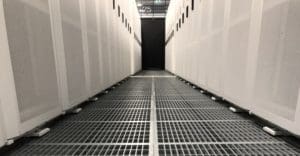
Know Your Data Centre Cooling
Understanding your data centre cooling system is essential for maintaining optimal performance and energy efficiency. Effective cooling strategies are crucial in preventing overheating, which can lead to equipment failure and costly downtime. Key aspects of data centre cooling include airflow management, where techniques like hot and cold aisle containment and the use of blanking panels help to direct cool air to the right places while preventing hot air recirculation. Additionally, advanced cooling technologies such as liquid cooling or free cooling can further enhance efficiency by reducing reliance on traditional air conditioning. Regular monitoring of temperature and humidity levels is also critical, allowing for real-time adjustments to maintain optimal conditions. By knowing and optimising your data centre's cooling, you can significantly reduce energy consumption, lower operational costs, and ensure the long-term reliability of your IT infrastructure.
Read More